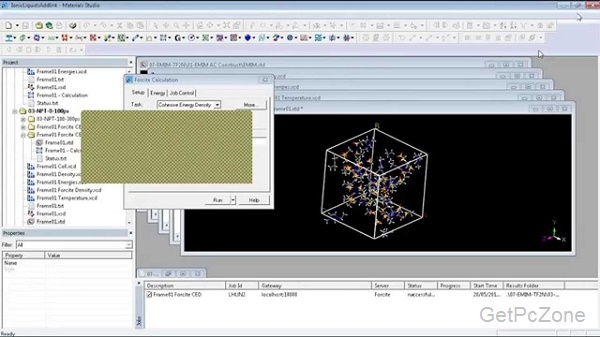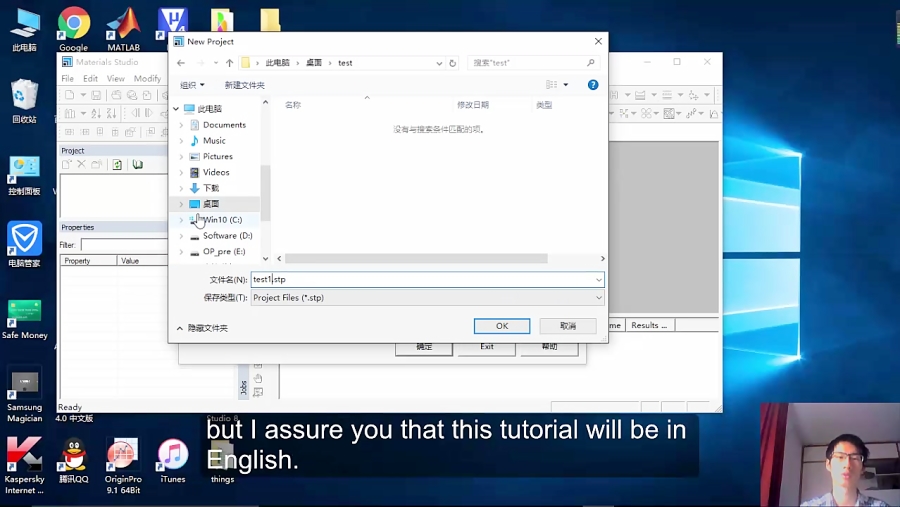

If confident in the unit cell parameters then this box can be unticked. Inclusion of ‘Optimize cell’ is optional.Further troubleshooting guidance can be found in the Appendix, section A8. Setting the number of iterations to 500 should be sufficient for any typical parameter set or input structure. If performing a more demanding optimization (e.g., smaller tolerance values, varying of unit cell parameters, high number of atoms in unit cell) then a higher number of iterations may be need.The numerical convergence tolerance values associated with each quality description within Materials Studio are specified in the Appendix. A value of Fine is typically sufficient (see the Appendix for piroxicam testing, Table A2). Quality specifies the tolerances that the Geometry Optimization must satisfy to successfully complete.By default, Metal box will be ticked when the CASTEP module is first opened.Ĭlicking More. Ensure that the Spin polarized and Metal box are unticked.Inclusion of a DFT-D correction is not considered critical for accurate calculated NMR parameters if unit cell parameters are fixed, however the inclusion of a correction with fixed unit cell parameters will not have any adverse effects on the outputted NMR values or computational time and is therefore recommended. 2 Inclusion of a DFT-D correction term is crucial if unit cell parameters are allowed to relax. TS has been found to give greater precision in cell parameters. Quality: Customised – as we will see later this drop-down will automatically change to this value as we modify further input parameters.A brief explanation, and suggested input values, for selected fields are given below: Setup Tab With the structure required to be optimized open, navigate to the CASTEP module as indicated in Fig.
#MATERIALS STUDIO TUTORIAL HOW TO#
Details on how to perform a relaxation of selected atoms only can be found in the Appendix. All atoms are typically allowed to relax during the geometry optimization step. This step is considered necessary before any NMR calculation.

To change the visualization of bonding go to Build > Bonds, and choose Kekule or Resonant, although this is for visualization purposes only and will not alter the calculated result.

Furthermore, ensure that the bonding configuration is as expected. These can be added to the structure by Build > Crystals > Unbuild Crystal, followed by Build > Crystals > Rebuild Crystals.

In some cases the structure solution does not add hydrogen atoms to the structure. cif file and verify that structure is as expected.
#MATERIALS STUDIO TUTORIAL SOFTWARE#
Minor differences in other versions of the software are possible. Materials Studio, version 17.1.0.48 is used throughout this guide. If the calculation does not run using the parameters specified within the main body of the text, troubleshooting guidance can be found in A8. The settings suggested herein are applicable to 1H, 13C, 15/14N and 17O. This protocol was influenced by separate, independently prepared, guides written by Sten Nilsson Lill (AstraZeneca, Sweden) and Albert Bartók-Pártay (Science and Technology Facilities Council, UK), in addition to stress-testing of parameters using a starting input of the crystal structure of β-piroxicam (CSD refcode: BIYSEH03) 1.


 0 kommentar(er)
0 kommentar(er)
